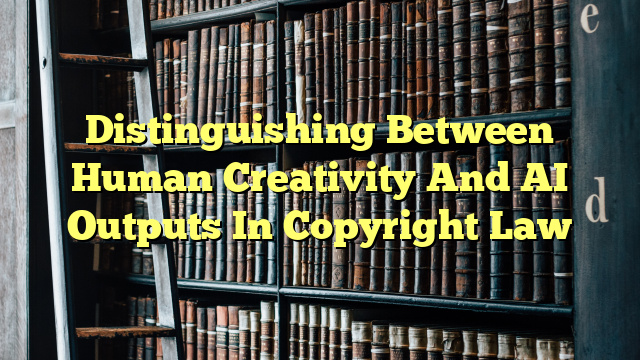Table of Contents
Difference Between AI Creativity and Human Creativity
Artificial Intelligence (AI) has made significant advancements in recent years, leading to the emergence of AI-generated creative works. However, there are fundamental differences between AI creativity and human creativity.
Human creativity is driven by complex emotions, experiences, and unique perspectives. It involves the ability to think critically, make connections, and express oneself through various mediums. Human artists often draw inspiration from their surroundings, emotions, and personal experiences.
On the other hand, AI creativity is based on algorithms and data analysis. AI systems can analyze vast amounts of data, identify patterns, and generate outputs based on learned information. While AI-generated works can be impressive and innovative, they lack the emotional depth and subjective experiences that human creators bring to their art.
How Artificial Intelligence Affects Copyright Law
The emergence of AI-generated creative works raises several legal and ethical questions regarding copyright law. Copyright law is designed to protect original works of authorship, but the question arises: who should be considered the author when it comes to AI-generated works?
Traditionally, copyright protection has been granted to human creators. However, with AI systems capable of producing original works, the question of authorship becomes more complex. Some argue that the developers or owners of the AI system should be considered the authors, while others believe that AI itself can be recognized as the author.
Legal frameworks will need to adapt to address these challenges and provide clarity on the ownership and protection of AI-generated works. It may require redefining the concept of authorship and considering new forms of intellectual property rights.
Is AI Output Copyrightable?
The copyrightability of AI output is a subject of debate. In many jurisdictions, copyright protection is granted to original works created by human authors. However, AI-generated works raise questions about the level of human involvement required for copyright protection.
Some argue that if an AI system autonomously creates a work without human intervention, it should be eligible for copyright protection. Others believe that human involvement in the AI’s creation process is necessary for copyrightability.
Ultimately, the determination of copyrightability will depend on legal interpretations and the development of specific guidelines and regulations. It is an area that requires careful consideration to strike a balance between encouraging innovation and protecting the rights of human creators.
What Distinguishes Human Art from AI Art?
While AI-generated art can be visually impressive and innovative, there are distinguishing factors that set human art apart.
Human art is often deeply rooted in personal experiences, emotions, and cultural contexts. It reflects the unique perspectives and interpretations of the human creator. Human artists bring their subjective thoughts, feelings, and creativity to their work, resulting in a rich tapestry of expression.
AI art, on the other hand, is based on algorithms and data analysis. It lacks the subjective experiences and emotions that human creators infuse into their art. AI-generated works may be technically proficient and visually appealing, but they lack the depth and complexity that human art often possesses.
Conclusion
The emergence of AI-generated creative works poses challenges for copyright law. Determining authorship, copyrightability, and the distinction between human and AI art requires careful consideration and adaptation of legal frameworks. As AI continues to advance, it is crucial to strike a balance between encouraging innovation and protecting the rights of human creators.

